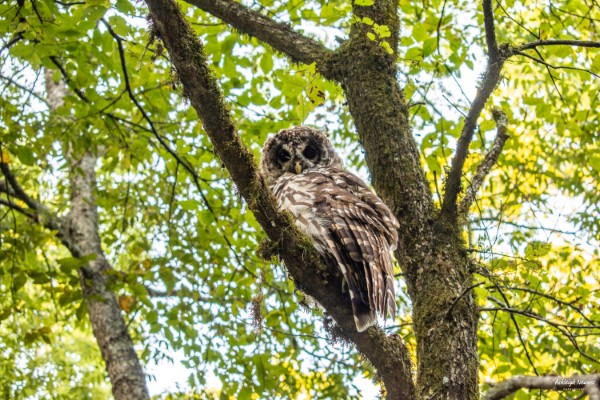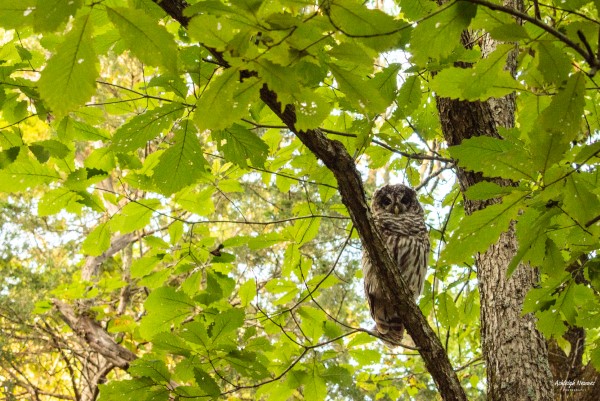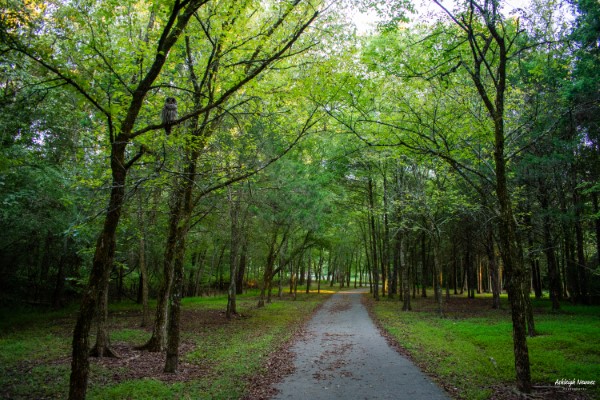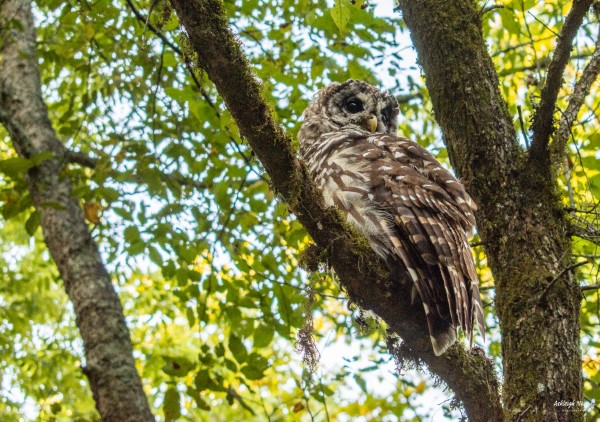
The barred owl’s call, “who cooks for you,” is a favorite of many nature lovers and arguably one of the most famous bird calls in North America.
Winter is one of the best times to hear these magnificent creatures. With the trees losing their leaves, the sound seems so much closer. They are mostly heard at night when they are most active, but can also sometimes be heard during the day.

The barred owl is a grayish-brown owl, most easily identified by the “bars” formed by its feather placement and its deep, black, soulful eyes. The barred owl is distributed throughout most of the Eastern and Central United States and parts of Southern Canada in old deciduous mixed forests, normally near water.
They hunt mostly at night but also can be seen to hunt during the day. Their diet consists mostly of small mammals; they enjoy eating smaller birds, amphibians, reptiles and insects, too.

Barred owls mate for life and usually choose a nesting site in a hollow of a tree or an old nest belonging to a hawk or squirrel, where they have a clutch of two to four eggs per year. Their average lifespan in the wild is 10 years, but they have been known to live much longer. Unfortunately, most of their deaths result from man-made causes.
During hungry times in January, when food is harder to come by, we are likely to see more of the barred owl. They may appear in our yards and stay for days watching for careless feeder birds. We are also more likely to see an increase in barred owl roadkill, as the search for food becomes harder. There have already been many sightings of dead owls on the roads in Murfreesboro during December. If rodent numbers are low during the year, following a year of abundant rodent numbers, we can expect to see a lot more of the barred owl during the frostiest months of the year.

If you have never seen a barred owl in person, I suggest heading to Barfield Crescent Park. These pictures were taken there, near the river and at dusk. This is where visitors have most frequently spotted this owl. For some fun winter bird-watching, bundle up and head out for a brisk early evening winter walk at Barfield.
If you are interested in conservation and want to do your part for the barred owl, you can set up a nesting box in your yard. There are many DIY plans and resources online to help you build the correct size and add the necessary predator protection for the ideal nest box.













